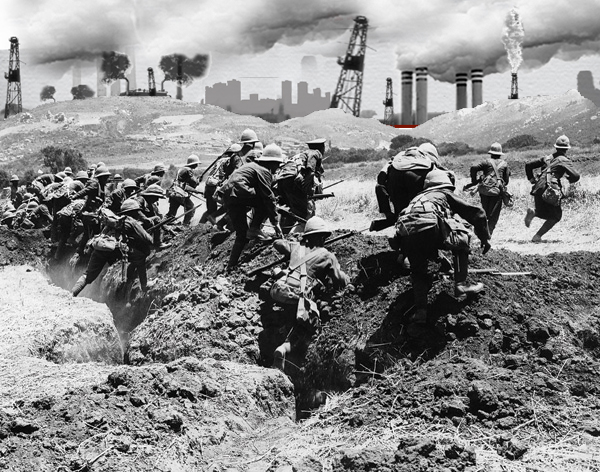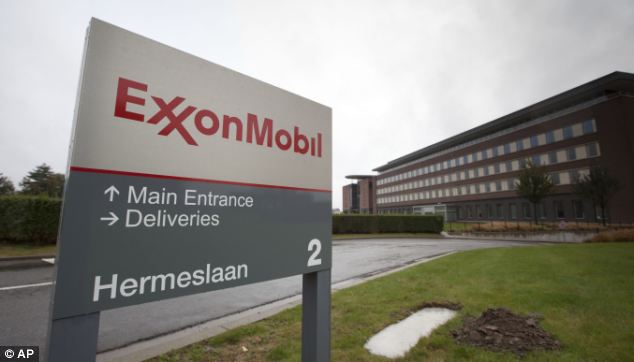Posts Tagged ‘Fort Worth Smog’
Summer Isn’t Coming, It’s Here. Ozone Season Arrives with a Vengeance.
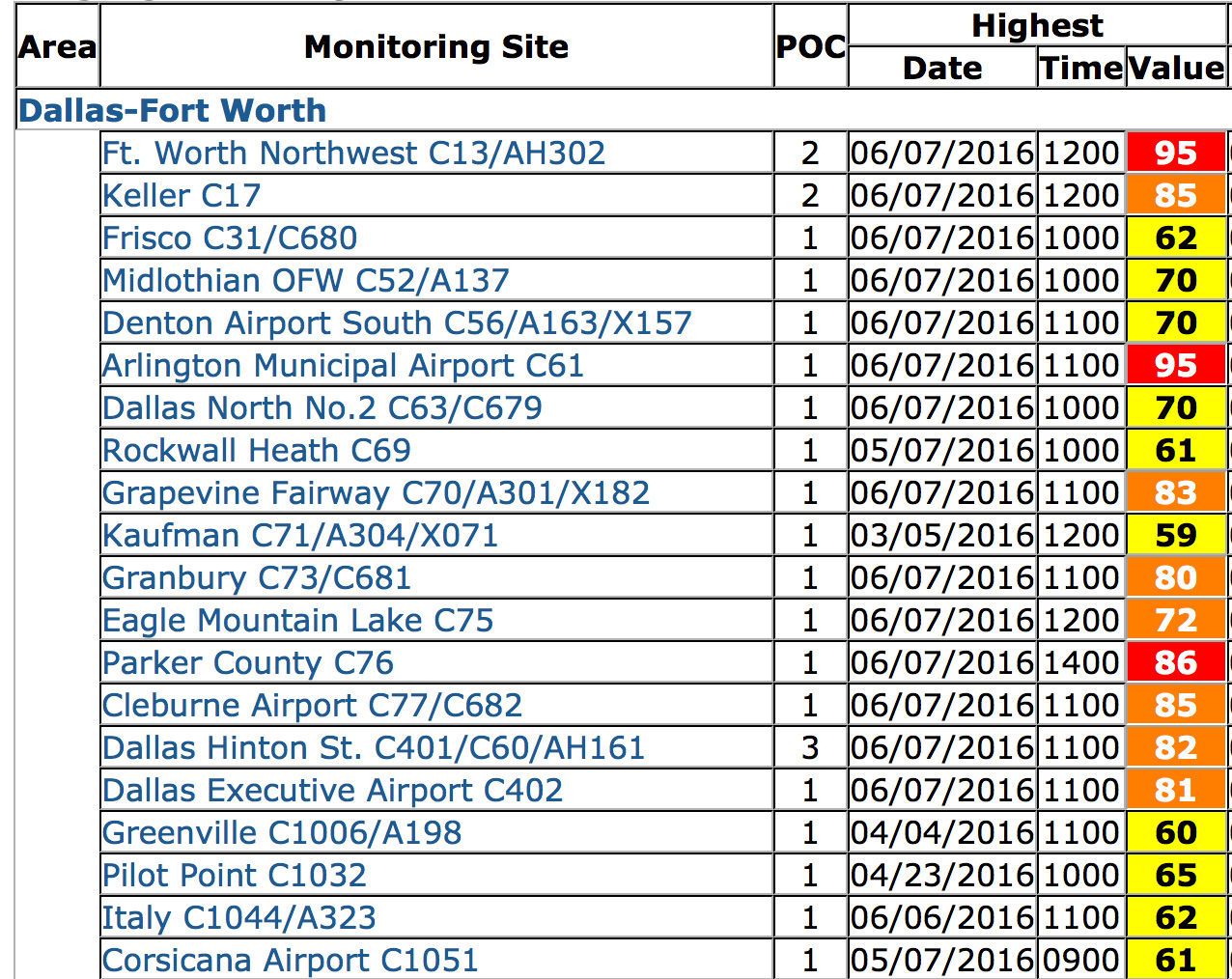 Yesterday was the single worst day for DFW smog in the last three years.
Yesterday was the single worst day for DFW smog in the last three years.
Seven monitoring sites stretching from central Dallas to Weatherford saw hourly averages of 90+ parts per billion. Three sites in Arlington, Northwest Fort Worth and Keller saw levels reach 100 + ppb. Two of those sites saw hourly levels climb to 113 ppb. To give you some idea of how bad that is, the original dreadful, obsolete standard during the 1980's and early 90's was 125 ppb in a single hour. We probably came within an hour or two of reaching a level of air pollution at not one, but two sites yesterday that would have exceeded a 40-year old smog standard.
14 out of the 20 DFW monitors recorded average ozone "exceedences" that violated the current 75 ppb 8-hour standard (what you see above). Two sites saw 8-hour averages of 95 ppb, the worst showing since September 2013.
It became a hazard to breathe for hundreds of thousands, maybe millions of DFW residents, yesterday afternoon. South Arlington residents experienced unhealthy levels of air pollution from 12 noon to 7 pm. In Keller it was 2 to 7 pm.
The good news? It could have been worse. The only thing preventing even higher numbers was the changing wind direction in mid-day. Monitors located in Dallas were recording high smog levels in the morning and lunchtime from northerly winds, but then they turned east and the pollution headed west, raising smog levels across broad swaths of Tarrant, Johnson, and Parker Counties. Had the wind been coming from the east all day, you would have seen the numbers those monitors reached at 2 -5 pm happen sooner, with more room to grow.
Wednesday also looks to be a bad day, as does the rest of the week of full-bore summer sunshine. Bad as they were, none of yesterday's exceedences actually count as a Clean Air Act violation…yet. It takes four bad days where the 8-hour average exceeds the 75 ppb standard over the course of the ozone season to make a violation. Regulators only use the fourth highest smog level recorded at each site to determine the annual average and whether an area is meeting the Clean Air Act standard (you can keep track of those here). Yesterday, nine monitors recorded their first exeedence of the year. Only three more to go.
However, the region's current reigning bad air champ, the Denton airport monitor, uncharacteristically remained out of harm's way and saw levels barely above the 75 ppb standard in mid-afternoon. It'll have it's chance. Summer is only beginning.
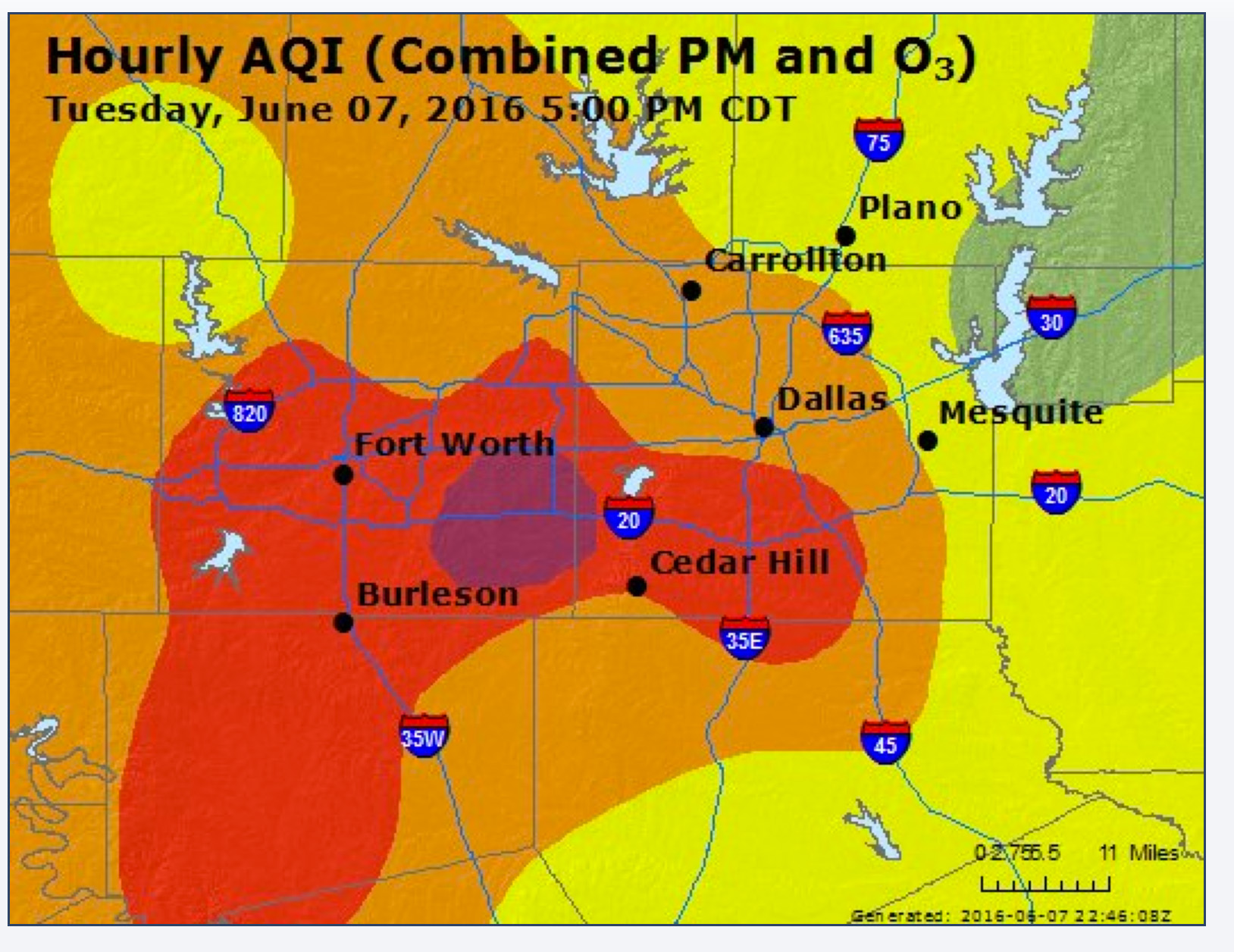 Tuesday's smog attack put an exclamation point in front of next Wednesday's Dallas City Council scheduled vote on Councilwoman Sandy Greyson's air quality resolution rejecting the current state plan – ain't it working out swell!? – in favor of a plan to eliminate days like yesterday.
Tuesday's smog attack put an exclamation point in front of next Wednesday's Dallas City Council scheduled vote on Councilwoman Sandy Greyson's air quality resolution rejecting the current state plan – ain't it working out swell!? – in favor of a plan to eliminate days like yesterday.
Greyson's resolution requesting a new and better clean air plan, as well as the staff presentation that provided background information, can be reviewed here. It's similar in content to one passed earlier in May by Dallas County.
Supporters can sign-up to speak for 3 minutes each when it comes up on the agenda and as always, we'll have plenty of lapel pins with the DFW Clean Air Network logo on them so you can non-verbally support the resolution as well.
If you want to speak at the Council meeting in favor of clean air, please contact the City Secretary beginning at 8:15 am tomorrow, Thursday, June 9th at (214) 670-3738 to reserve a 3-minute speaking slot or Item #12 on the "consent agenda."
Consent agendas are tricky things. They require complete unanimity among all 15 council members and are usually reserved for the most benign, non-controversial subjects. So at first glance, it's a good thing our resolution is on the list because it implies support from all 15 members.
But, and it's a big but….any member who doesn't agree it should be on the consent agenda can ask that it be taken off and placed in the "Items for Individual Consideration" bin – kind of like going to the back of the line and waiting for all the other business to get done before re-visiting the matter.
If there's industry opposition, or any opposition for that matter, it would give a council member an excuse to take it off the consent agenda and send it to the back of the line in hopes us cooling our heels and losing speakers as the day wears on. And it only takes one council member disagreeing to do so. This is why we need you to send emails to ALL 15 council members.
Since it's on the consent agenda, at least for now, it'll be among the first orders of business next Wednesday. Supporters need to show up at 9 am sharp.
Dallas passing this resolution would mean that the most populous city in the DFW "non-attainment area" for smog is rejecting the anti-science "do-nothing" approach of the State and demanding a better strategy to actually clean up chronic air pollution.
That's exactly the kind of statement local governments have to send EPA in order for the federal agency to screw-up enough courage and reject the current state proposal in favor of something better.
And after yesterday, is there anyone outside of Austin who believes we don't need something better?
Dallas City Council Clean Air Vote
Wed. June 15th 9am
Dallas City Hall 1500 Marilla
Next Week: Two Events Put DFW Greens on the Front Lines of Change…Again
GET OUT OF YOUR RUT AND JOIN THE FIGHT!
MONDAY, MAY 23rd
9am Dallas City Hall
1500 Marilla Downtown Dallas
Room 6ES (6th Floor, South)
Dallas City Council's Quality of Life Committee Considers/Votes
on the DFW AIR QUALITY RESOLUTION
WEDNESDAY, MAY 25th
7:30 am – 10 am
Morton Meyerson Symphony Center
2301 Flora Downtown Dallas
EXXON – MOBIL SHAREHOLDERS MEETING
MONDAY, the 23rd
Dallas could follow Dallas County and be the second North Texas local government to say they want the EPA to reject the state's air plan for DFW.
Think about that. In "Red" Texas, local governments are asking the EPA to intervene and give them cleaner air because of their own State's failure to do so.
Just like our Green Cement Campaign, and our Dallas Drilling Ordinance, an EPA- written air plan for DFW would be setting an important national precedent from right here in the Belly of the Beast.
 Sandy Greyson is Chair of this Committee, which includes:
Sandy Greyson is Chair of this Committee, which includes:
Tiffini Young
district7@dallascityhall.com
Mark Clayton
mark.clayton@dallascityhall.com
Philip Kingston
Philip.Kingston@dallascityhall.com
Adam McGough
adam.mcgough@dallascityhall.com
Rickey Callahan
rick.callahan@dallascityhall.com
Please email these council members and tell them you support Ms. Greyson's air quality resolution.
This is a Committee hearing. There is no public comment allowed, but public shows of support are encouraged and the council members may ask questions from experts in the audience.
We'll have plenty of DFW CAN BREATHE CLEAN AIR lapel pins. Feel free to wear one and/or show your support through other means.
If this Committee votes in favor of the resolution, it'll probably go to the full council for a vote in June.
Show up Monday and let the City Council know you care about clean air.
WEDNESDAY, MAY 25th
The national spotlight will be on Dallas again on Wednesday as Exxon-Mobil, our own hometown corporate Poster Child for climate change denial, will be holding its annual shareholders meeting in downtown Dallas.
Because of new revelations the company secretly knew about the dangers of climate change in the late 1970's, but continued to publicly deny the phenomenon, this year's annual meeting in Dallas is especially important. More than 500,000 people across the United States have called on the Department of Justice and State Attorneys General to look into Exxon's cover-up. So far, Massachusetts, U.S. Virgin Islands, New York, and California have launched official investigations.
350.org, the Sierra Club and other national groups have been leading the call to show up at the Exxon-Mobil meeting and make sure the company is held accountable for its past and current behavior.
Most of us never get to go to international conferences and protests like Paris last year, or even ones in DC or New York. But next Wednesday the 25th, the epic global fight against self-destruction comes to your own doorstep.
What are you going to do?
Don't let your activism end once you go off-line. Turn your "like" into an action.
Show up Wednesday morning bright and early and represent.
They'll be coffee and food. They'll be banners. They'll be media.
But we need you to be there too.
Help us show the rest of the world that we can do our part.
Help us keep the pressure on.
Help us win.
WEDNESDAY, MAY 25th 7:30 am – 10 am
Morton Meyerson Symphony Center 2301 Flora Downtown Dallas
New Comments from EPA on DFW Air Plan: It Won’t Work
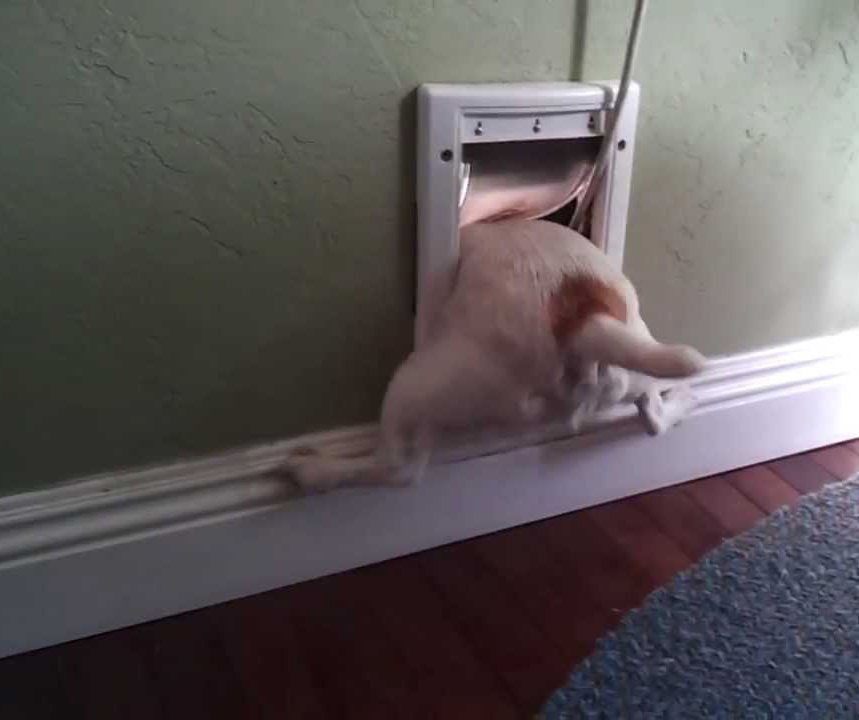 This plan won't work.
This plan won't work.
That's the simple message from the three pages of new comments Region 6 EPA staff submitted to the Texas Commission on Environmental Quality last month concerning its anti-smog plan for DFW.
That message begins with the cover letter, written by Mary Stanton, Chief of the State Implementation Plan Section for Region 6. "… additional local and regional ozone precursor emission reductions will be necessary to reach attainment by 2017."
How much in reductions? EPA estimates an additional 100-200 tons per day more in cuts of smog-forming pollution will be necessary to achieve compliance with the current 75 parts per billion ozone standard. "Without emission reductions on this scale, it is unlikely that the area will attain by the attainment date.”
To give you some idea of how large a number that is, TCEQ calculates that all gas and oil air pollution in DFW equals 78 tons per day, the Midlothian cement plants belch out over 18 tons per day, and all the power plants in the immediate DFW area, 21 tons per day. Totaled, those three sources add up to 117 tons of pollution a year.
All the cars and trucks on DFW roads are said to add up to 180 tons per day of pollution.
So the decrease in pollution EPA is saying is necessary to get down to the current ozone standard is huge.
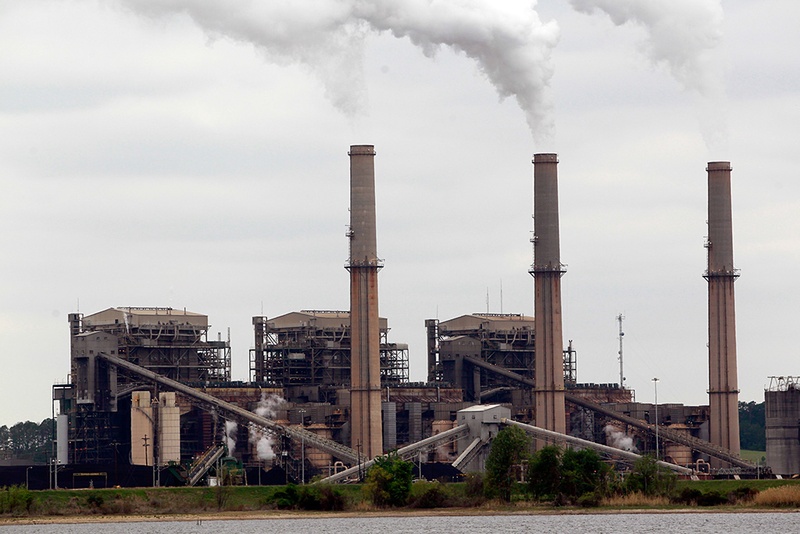
But take a look at those obsolete East Texas coal plants outside the boundaries the DFW nonattainment area. TCEQ says they account for a total of 146 tons per day. Add Selective Catalytic Reduction (SCR) which can get you up to 90% reductions in coal plant emissions, or close them down completely, add decreases from new controls on the cement kilns and oil and gas sources, and you're well on your way to amassing 200 tons a day of cuts in pollution.
Which do you think is more attractive to most DFW residents: permanently parking their cars, or putting new controls on the coal plants? Even though the coal plants harm the whole DFW airshed more than any other major source, they're not held accountable to the same regulatory requirements as sources closer to the center of the urban core, but which have less impact. Our cars must have special gasoline formulas in summer, we have to have HOV lanes, and we still go through Ozone Action Days, but the coal plants party like it's 1979. TCEQ is taking a hands-off approach to the plants and as a result the DFW region will continue to be in violation of the smog standard or huge cuts from other sources will be necessary.
TCEQ could have added new controls to the coal plants to the plan, but it chose not to. In fact, there are no new controls in the state's plan on any major sources of air pollution affecting DFW. EPA's new comments go to the heart of that choice. "Without additional emission reduction measures, we don’t see how the area will meet the standard of 75 ppb by the end of the 2017 ozone season," writes EPA staff.
EPA goes on to say TCEQ's computer modeling supporting it's do-nothing plan is "unrealistic," severely underestimating future smog levels, and delivering projections of decreases "that seem unlikely to be reached."
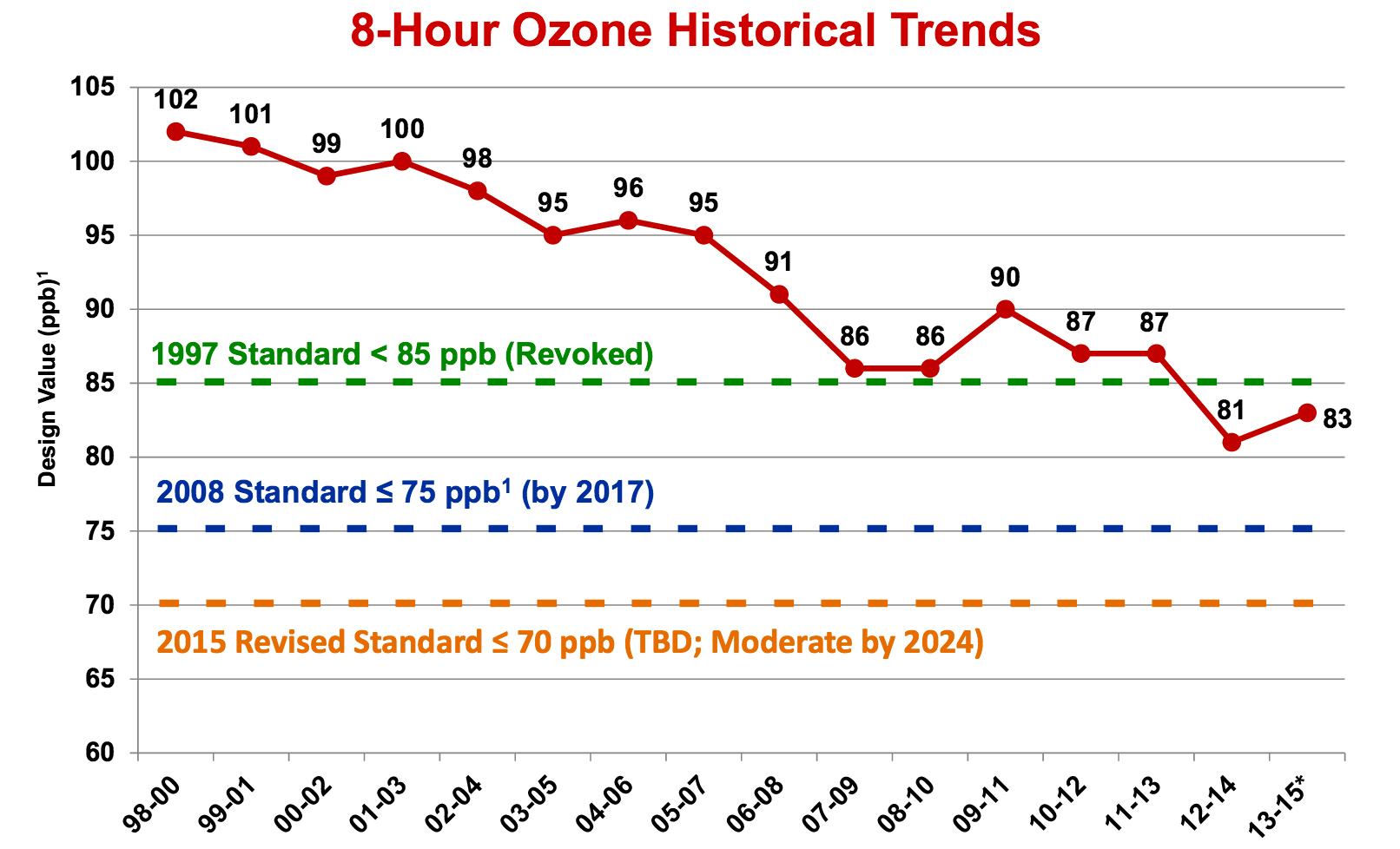 With this stance, EPA seems poised to reject this "attainment demonstration" part of the air plan as being insufficient. But it must wait to see how TCEQ responds to EPA comments about its modeling shortcomings and need for new cuts when the state officially submits its plan this July. Then, and ony then can the Agency approve or disapprove. We're going out on a limb here and predicting TCEQ won't change a thing, thus inviting EPA disapproval.
With this stance, EPA seems poised to reject this "attainment demonstration" part of the air plan as being insufficient. But it must wait to see how TCEQ responds to EPA comments about its modeling shortcomings and need for new cuts when the state officially submits its plan this July. Then, and ony then can the Agency approve or disapprove. We're going out on a limb here and predicting TCEQ won't change a thing, thus inviting EPA disapproval.
That's the pattern TCEQ has already established with its "screw you" response to the EPA's comments about the part of the plan dealing with "Reasonably Available Control Technology," or RACT, last February. This second part decides what new controls should be required of major sources of air pollution within the 10-County DFW "non-attainment" area – like the Midlothian cement plants and the thousands of oil and gas facilities checkerboarding the western half of the Metromess.
TCEQ says nothing new is required. EPA disagrees. EPA told TCEQ last year it had to do a new RACT review and lower the kiln's emission limits to account for a new generation of technology or it would have to reject the state's plan. TCEQ ignored the request, daring the EPA to disapprove. EPA seems more than willing to take them up on the offer.
And so while you're waiting for the state's computer modeling and suspect math to be rejected by EPA in July, you can probably expect to see EPA officially rejecting the RACT part of the state's plan sooner – maybe as soon as the next 60-90 days.
Despite the TCEQ going out of its way to submit an unacceptable plan to EPA, if the Agency pulls the trigger and begins a federal takeover of the DFW air plan, the Commission and the whole of Texas State Government will cry bloody murder about the usurpation of the state's authority and once again proclaim how "out of control" the EPA is on their way to filing suit.
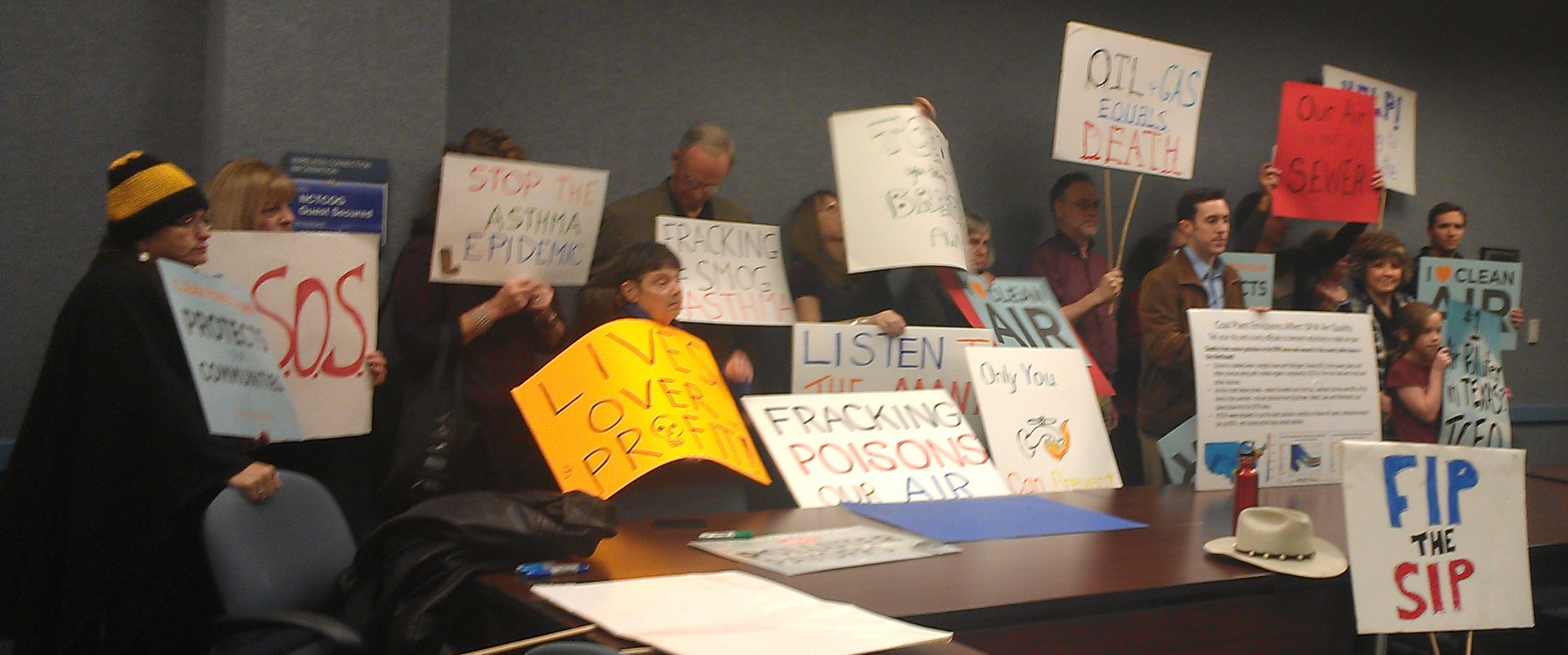 This is why the rowdy eruption of public sentiment for an EPA plan at the hearing in Arlington two weeks ago was so critical (Thank you again). It's also why we now have to be about the business of getting DFW local governments, hospitals and school districts to pass resolutions in favor of an EPA takeover. The Agency will need this kind of public support to counter all the criticism it will take from the Usual Suspects in Austin and DC. If you're interested in helping us pass one of these resolutions in your county, city, school or hospital district, please let us know at: downwindersatrisk@gmail.com
This is why the rowdy eruption of public sentiment for an EPA plan at the hearing in Arlington two weeks ago was so critical (Thank you again). It's also why we now have to be about the business of getting DFW local governments, hospitals and school districts to pass resolutions in favor of an EPA takeover. The Agency will need this kind of public support to counter all the criticism it will take from the Usual Suspects in Austin and DC. If you're interested in helping us pass one of these resolutions in your county, city, school or hospital district, please let us know at: downwindersatrisk@gmail.com
And as always, it's why you, and people you know should:
It’s a Texas vs EPA Cage Match. Winner Takes All …The Air You Breathe
 JOIN OUR TAG TEAM EFFORT TO TAKE DOWN THE STATE OF TEXAS
JOIN OUR TAG TEAM EFFORT TO TAKE DOWN THE STATE OF TEXAS
BUT WATCH OUT – THEY PLAY DIRTY
NEXT THURSDAY EVENING
JANUARY 21st
6:30 PM
616 Six Flags Road
First Floor HQ of the
North Central Texas Council of Governments
There's an important bureaucratic cage match between EPA and the State over how clean your air should be.
The state says just by hitching a ride on already-in-progress federal gasoline mix for cars and trucks, DFW ozone, or smog, will drop to levels "close enough" to the current federal smog standard of 75 parts per billion (approximately 78 ppb) . No new cuts in pollution required.
The EPA says not so fast – "close enough" may not be good enough this time around and you're not following the Clean Air Act in laying back and requiring no new cuts in pollution.
EPA has told Austin a failure to follow Clean Air Act rules will force it to take responsibility for the plan away from the State.
Is this something you want? If so, you should show up and next Thursday evening to give the EPA the political support it needs to pull the rug out from under the State.
WHAT HAS THE EPA ALREADY SAID ABOUT THE STATE'S PLAN?
Along with comments from DFW residents, environmental groups, doctors, industry and elected officials, EPA itself will weigh-in with written comments on the TCEQ plan by the deadline of January 29th.
But we don't have to wait that long to find out what EPA really thinks about what the State is proposing. Last year, EPA provided 11 pages of comments on exactly the same plan.
1) This plan won't work without more cuts in pollution
What EPA Said:
"Based on the monitoring data and lack of additional large reductions in NOx within areas of Texas that impact DFW, it is difficult to see how the area would reach attainment in 2018 based solely on federal measures reductions from mobile and non-road….The recent court decision that indicates the attainment year will likely be 2017 for moderate classification areas such as DFW, makes it less clear that the area will attain the standard by 2017 without additional reductions."
What EPA Meant:
It wasn't looking good when the deadline for reaching the 75 ppb standard was 2018 and the State didn't require any new cuts in air pollution, but now that the deadline is 2017, your do-nothing "close enough" plan is even less likely to work.
2) Your case for doing nothing isn't very good
What EPA Said:
"While the State has provided a large chapter on Weight of Evidence, the principal evidence is the recent monitor data. The monitor data does not show the large drops in local ozone levels and therefore raises a fundamental question whether the photochemical modeling is working as an accurate tool for assessing attainment in 2018 for DFW."
What EPA Meant:
Actual measurements of smog in DFW seem to undercut your claim that the air is getting cleaner faster. Maybe your computer model that's driving the entire plan isn't all that great. (And this was before smog levels went UP after the summer of 2015 – something not predicted by the State's model….)
3) Review pollution limits for the Midlothian cement kilns, or we'll reject your plan
What EPA Said:
"Because of significant changes in the type and number of cement kilns in Ellis County,…TCEQ's rules need to be reevaluated to insure these reductions are maintained, and the emission limits reflect a Reasonably Available Control Technology (RACT) level of control as required by the Clean Air Act…Failure to conduct a thorough RACT analysis for cement kilns which would include appropriate emission limits would prevent us from approving the RACT portion of the attainment plan submittal."
What EPA Meant:
Update your kiln pollution limits, or this part of the plan is toast. (Texas chose not to perform this update, in essence, giving EPA the bureaucratic finger.)
4) Oil and Gas pollution seems to be keeping the region's smog levels higher than they should be
What EPA Said:
"Recent NOx trends (Figure 5-10 in TCEQ's Proposal) indicate a fairly flat NOx trend for several NO monitors in the western area of the DFW area (Eagle Mtn. Lake, Denton, and Parker County monitors). These monitors are in areas more impacted by the growth in NOx sources for Oil and Gas Development that seem to be countering the normal reduction in NOx levels seen at other monitors due to fleet turnover reductions (on-road and Nonroad). These higher NOx levels in the modeling domain that seem to be fairly flat with no change since 2009
raise concern that the area is not seeing the NOx reductions needed to bring the ozone levels down at these monitors."
What EPA Meant:
Since the historically worst-performing air pollution monitors in DFW are located in exactly the same area as a lot of gas and oil activity, and these monitors haven't been seeing the expected decrease in smog you predict, maybe you ought to think about cutting pollution from those oil and gas sources. Like we said, this plan needs more cuts in pollution.
5) Your own evidence supports cuts in pollution from the East Texas Coal Plants
What EPA Said:
"The TCEQ provided an evaluation of emissions from all of the utility electric generators in east and central Texas. However, the discussion in Appendix D on the formation, background levels, and transport of ozone strongly supports the implementation of controls on NOx sources located to the east and southeast of the DFW nonattainment area. How would a reduction in NOx emissions from utility electric generators in just the counties closest to the eastern and southern boundaries of the DFW area impact the DFW area?"
What EPA Meant:
Despite your protests, the State's own analysis shows cuts in pollution from the East Texas Coal Plants have a big impact on DFW smog levels and supports the argument for putting new controls on them. Did you actually run your fancy-dancy computer model to see what would happen if you did that? (No, the State did not. But UNT and Downwinders did.)
WHY WOULD AN EPA PLAN FOR DFW AIR MAKE ANY DIFFERENCE?

If the EPA rejects the State's plan, the clock begins ticking: the State is warned it has to write a new plan and, meanwhile, EPA begins to write its own. If the State doesn't turn in a plan the EPA finds acceptable in 24 months, the EPA plan is implemented instead.
The State has no interest in any new cuts of pollution from any sources. It thinks it's plan is already "close enough."
If the EPA is writing the plan, citizens can use the new UNT study to show the Agency which cuts get the largest drops in smog – using the State's own air model.
We can use Dr.Haley's study to show the approximate economic and public health benefits of those cuts.
More change happens if EPA is writing the plan.Enough to finally get DFW safe and legal air? We don't know until we try. The alternative is doing nothing.
DFW One of Only Ten Areas Nationwide Not Expected to Meet New Smog Standard by 2025
 There was a lot of coverage of last week's announcment of a new, more protective national smog standard by EPA. Most of it centered on the reaction by both sides that it was either not enough progress (public health advocates), or Western Civilization was about to collapse under the weight of all the controls necessary to meet the standard (National Chamber of Commerce, et al.).
There was a lot of coverage of last week's announcment of a new, more protective national smog standard by EPA. Most of it centered on the reaction by both sides that it was either not enough progress (public health advocates), or Western Civilization was about to collapse under the weight of all the controls necessary to meet the standard (National Chamber of Commerce, et al.).
But if you read deeper into the articles, many of them mentioned computer modeling EPA had already done that demonstrated, given current trends, only 14 counties, representing 10 separate areas, wouldn't be able to meet the new standard by the target year of 2025. Unfortutantely, none of those articles mentioned which 14 counties, or which 10 areas.
Now, given all that you already know about our state and regional track record for meeting clean air deadlines, your first question might be: how many of those are in Texas? We'll give you a minute or two to start a pool and pick a number….
And the answer is: Three. Brazoria and Harris Counties in the Houston "non-attainment area" for smog, and Tarrant in DFW's non-attainment area. (The ten areas are: Baltimore, Dallas-Fort Worth, Denver, Fort Collins, Houston, Louisville, Milwaukee, New Haven, New York, and Pittsburgh).
Of course, for the purposes of regional smog record-keeping, EPA doesn't separate Tarrant County numbers from Dallas County, or Denton County, or any of the other nine counties in the non-attainment area. If one monitor is out of compliance in the area, the whole region is considered in violation. So EPA is conceeding that both DFW and Houston will still continue to be in continual violation of the Clean Air Act for another decade.
This is discouraging but not surprising. The State refuses to put new-generation controls on large major polluters like the Midlothian cement plants, East Texas coal plants, and gas production facilities, while painting the rosiest scenarios with its own modeling.
But this new revelation means it's that much more important to get EPA to override the state and act now to include controls on those major polluters, while the current smog plan is in the pipeline. It may be the only chance we have in the next 5-10 years to adequately address these sources. This can only be done if the EPA decides to revoke Texas' authority to write and implement these plans – to commit to a Federal Implementation Plan of its own.
PLEASE….
1) Sign our Change.Org petition urging the EPA to reject the state's clean air plan for DFW and substitute one of its own, and
2) Send an e-mail to the Chief EPA administrator in Washington and the Regional Administrator here in Dallas saying you want them to take responsibility for a new DFW air plan.
Thanks.
Downwinders and Sierra Club File Joint Comments on the State’s DFW “Do Nothing”Air Plan
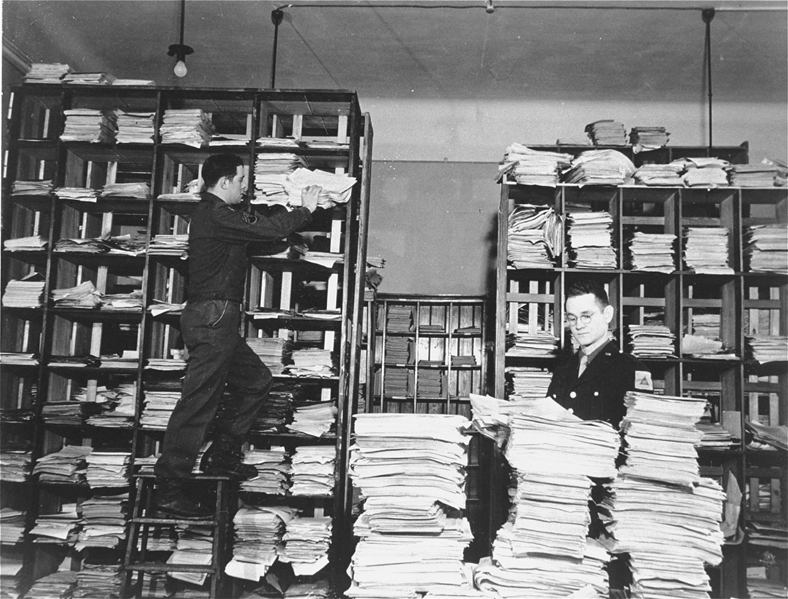 Wednesday of last week saw the deadline for filing official comments on the dreadful "plan" the Texas Commission on Environmental Quality has proposed to lower smog levels in DFW by 2018. In effect, the plan is to wait for federal gasoline changes in 2017 and hope for the best.
Wednesday of last week saw the deadline for filing official comments on the dreadful "plan" the Texas Commission on Environmental Quality has proposed to lower smog levels in DFW by 2018. In effect, the plan is to wait for federal gasoline changes in 2017 and hope for the best.
Shortly before closing time Wednesday, Downwinders at Risk and the Lone Star Chapter of the Sierra Club submitted 62 pages of criticisms concerning the plan. Not because either organization believes the TCEQ Commissioners will change heir minds, but because we're trying to establish a record that might eventually lead to a court challenge of the plan.
Although lengthy, the basic approach of the groups is two fold – call into question the state's computer modeling that's predicting success and challenge the state's exclusion of new pollution control measures on the Midlothian cement plants, East Texas Coal plants and Barnett Shale gas compressors.
Some of the highlights:
– The computer modeling the TCEQ is using for its new plan is the same it used for plans in 2006 and 2011, neither one of them successful at meeting its goal of cleaner air by the assigned deadline. In fact, the last clean air plan using this same model underestimated smog levels by almost 10 parts ber billion and actually saw a slight rise in smog at its conclusion – the first time a DFW plan ever resulted in higher ozone levels.
– In defiance of EPA guidance, the computer model TCEQ is using is more than five years old. EPA specifically recommends using an "ozone season" from 2009 to 2013. TCEQ's model is leftover from 2006, or three years older than the oldest year EPA says is appropriate.
– Also contrary to EPA rules, the TCEQ 2006 computer model ignores including the most relevant “meteorological conditions conducive to elevated air quality.” 2011 was the worst year for ozone levels in DFW since the beginning of this decade, in large part because it reflected the worst drought conditions. The three-year rolling average for the worst monitor, called the "design value" rose back up to 90 parts per billion after years of floating in the mid to upper 80's. But instead of using that year as a worst case baseline, the state defaulted to its 2006 model that doesn't incorporate the current drought.
– TCEQ's prediction of success is built on a series of unrealistic assumptions about the quantity of oil and gas pollution. For example, it underestimates the number and impact of air pollution from hundreds of large compressor stations and thousands of smaller "lift" compressors as the Barnett Shale ages. Fully 60 to 70% of all air pollution from the gas industry comes from these kinds fo facilities, so a mistake in estimating their impact could have a large chain reaction at downwind air quality monitoring sites in Tarrant, Denton, Parker and Johnson counties.
TCEQ also assumes that production levels in the Barnett will fall steeply. If they do not, there could be hundreds of tons more air pollution from the industry annually than what TCEQ assumes in its model.
That's important because the model predicts that the region will only barely squeak-by the 75 ppb standard required by 2018, with levels coming in at 75.87 at the Denton monitor site, 75.15 at Eagle Mountain Lake, and 75.04 in Grapevine. A jump in oil and gas pollution – or any other surge in pollution from any other source – could make those numbers obsolete and ruin our chances fo complying with the Clean Air Act on time…again.
– TCEQ's "Contingency Measures" are illegal. Every smog plan must have a series of quantifiable back-up contingency pans in case the options the plan relies on fail to achieve success. In this case, the state is only relying on unquantified and voluntary actions, such as "incentive" programs, the effectiveness of which cannot be measured. Since you can't measure them, you can't count them.
– TCEQ failed to consider all "reasonably available control technologies" and "measures." Nearly 40 pages is devoted to the wrong-headed, irrational, and illegal way TCEQ rejects off-the-shelf air pollution controls for the Midlothian cement plants, East Texas coal plants, and large gas compressors.
Under the Clean Air Act, a state's plan “shall provide for the implementation of all reasonably available control measures as expeditiously as practicable (including such reductions in emissions from existing sources in the area as may be obtained through the adoption, at a minimum, of reasonably available control technology) and shall provide for attainment of the national primary ambient air quality standards.” In order for the EPA to determine whether an area has provided for implementation as "expeditiously as practicable,” the State "must explain why the selected implementation schedule is the earliest schedule based on the specific circumstances of that area. Such claims cannot be general claims that more time is needed but rather should be specifically grounded in evidence of economic or technologic infeasibility.”
Step-by-step, Downwinders and the Sierra Club explains why Selective Catalytic Reduction (SCR) is a reasonable control technology for the Midlothian cement plants and East Texas coal plants. Even as the owners of one of the Midlothian cement plants applies for a permit to install the technology, TCEQ is claiming its still not ready for prime time. The groups demonstrate how requiring SCR on these major polluters would have a large impact on DFW ozone levels.
The same level of absurdity if reveled in TCEQ's rejection of electrification of gas compressors. Despite being able to significantly lower smog-pollution in the very areas where its needed most, and despite electrification even being required by many Barnett shale municipalities, the state maintains that this option is unrealistic and unachievable.
There's probably no better compendium of the various sins committed by the TCEQ plan than these comments. If you're looking for the most solid case for compressor electrification, or SCR adaptation, or just TCEQ malfeasance, this is your one-stop shop.
You may think this is a technical document, or one full of legal mumbo-jumbo. It's not, at least not for the most part. Instead it's the kind of logical, evidenced case you'd assemble for a debate with the TCEQ. It's a blow-by-blow comprehensive look at why the state isn't any more likely to meet this clean air deadline than it has any other. A case we hope is capable of persuading EPA to reject the TCEQ plan.
Citizens To Form Posse, Demand State Enforce the Clean Air Act at Thursday Hearing on New DFW Air Plan
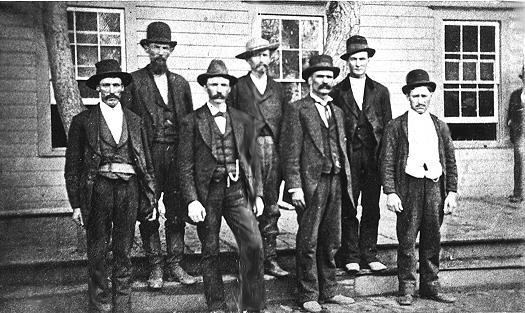 (Arlington) Critics of a new plan to clean the air in Dallas-Ft. Worth are using a public hearing on Thursday evening to accuse the state of Texas of breaking the law by not requiring the implementation of pollution control technologies already in widespread use to help lower smog levels in North Texas.
(Arlington) Critics of a new plan to clean the air in Dallas-Ft. Worth are using a public hearing on Thursday evening to accuse the state of Texas of breaking the law by not requiring the implementation of pollution control technologies already in widespread use to help lower smog levels in North Texas.
“We’re asking residents to come out and get sworn into a citizens posse to help us make the state follow the Clean Air Act,” said Jim Schermbeck, Director of the local clean air group Downwinders at risk, one of the leading opponents of he new plan. “Austin is going to ridiculous, Monty Python-like lengths to avoid new controls on the Midlothian cement plants, East Texas coal plants, and local gas facilities in this new plan – even though those controls are now commonplace in each industry.”
Thursday’s public hearing centers on a new plan to comply with the federal ozone standard of 75 parts per billion (ppb) by 2018. DFW has never achieved such a low level of smog, and only this last year dipped below the 1997 standard of 85 ppb for the first time with the help of cooler, wetter summer.
EPA says a state plan like the one the Texas Commission on Environmental Quality is proposing for DFW must include “all Reasonable Available Control Technologies,” and “all Reasonable Available Control Measures” to get lower smog levels as “expeditiously as possible.” EPA defines these as technologies as ones that are “technically and economically feasible.” But according to Schermbeck, the state of Texas is deliberately ruling out local use of pollution controls already adopted by industry that could speed cleaner air.
He cited three examples. Selective Catalytic Reduction, or SCR acts much like the catalyst on cars, only on a much larger scale for industrial plants. It’s already in use on at least half a dozen European cement plants where it’s reduced smog-forming pollution by up to 90%, and on many coal-fired power plants across the world and in the US, where it achieves the same results. Yet the TCEQ DFW air plan doesn’t require SCR on the largest single sources of smog pollution in the region, the Midlothian cement plants, or the East Texas coal plants that are known to impact DFW air quality, saying the technology isn’t “feasible.” TCEQ maintains this stance even though the Holcim cement plant in Midlothian has announced plans to include an SCR unit on one of its own kilns.
“Here’s a pollution control technology already in operation and achieving great results, with a cement plant in North Texas already adopting it, but the state’s position is that it isn’t ‘feasible’. It’d be comical if it wasn’t delaying cleaner air for over 6 million people that haven’t had it in decades.”
Besides ignoring SCR on cement and coal plants, Schermbeck said the TCEQ has also ruled-out electrification of large gas compressors as “infeasible” – despite the widespread use of electric compressors In the Barnett Shale already and the requirement of municipalities like Dallas and Southlake to allow nothing but electric compressors within their city limits. According to a 2012 study by the Houston Advance Research Consortium, compressors could increase downwind ozone levels as much as 3 to 10 parts per billion. There are at least 647 large compressors in the DFW “non-attainment area” covered by the TCEQ air plan.
“Requiring just these three technologies that are already on the market and being used in their respective industries could reduce air pollution by thousands of tons a year and help us achieve compliance with the new federal ozone standard much quicker,“ said Schermbeck. He said they all pass the test of being feasible according to EPA definitions. “By law, they should be required.”
Instead, the state is relying exclusively on a new federal gasoline mix being introduced in 2017 to achieve the required 75 ppb standard by 2018. Although it’s expected to help lower ozone levels across the country, it won’t get DFW down to the level of 75 ppb alone. To make the plan work on paper, the state has had to estimate oil and gas pollution downward in a way Schermbeck and others claim is unrealistic.
“Basically, the state’s approach is to do absolutely nothing for the next three years and hope the federal gasoline change brings it “close enough” to the lower standard. But hope is not a plan.”
Schermbeck said his group would be passing out badges to members of their clean air posse and recruiting residents to persuade the EPA to reject the state’s proposal. The federal agency has the final say. But there’s also always court – where many clean air rules for the state of Texas have been decided over the last 20 years. “If government won’t enforce the law, we may have to do it ourselves.”
Thank You. Citizens Might Have Just Saved The Local Air Planning Process…From Itself
 A year from now, last Thursday' meeting in Arlington may be seen as a turning point.
A year from now, last Thursday' meeting in Arlington may be seen as a turning point.
Local residents refused to let the air quality planning process die, showing up in numbers that forced officials to switch to a larger room, and making sure their opposition to another state "do-nothing" air plan was heard loud and clear.
Their participation had already changed the day's agenda. Included was a breakthrough UNT study that directly challenges the Texas Commission on Environmental Quality's claim that natural gas emissions don't increase DFW smog.
UNT's Dr. Kuruvilla John's presentation of the new study received quite a bit of media coverage, before, during, and after Thursday's meeting. You can find some of the best coverage by clicking on the links below.
UT-Austin Study Reveals "Underestimates"
Dr. John's presentation influenced another researcher's slide show as well. Scheduled to speak about older, more generic ambient air measurements for ozone, Dr. David Allen of UT Austin instead presented more recent research into gas pollution as well.
Overlooked in the debut of the UNT study, Allen's constant monitoring of one drill site in Fort Worth revealed that the TCEQ was underestimating emissions from the pneumatic valves at the site by 159%.
That was news to both citizens and TCEQ, who said they hadn't looked at Allen's research and hadn't corrected their inventories to account for such underestimates. Valves like these are powered by natural gas, are quite numerous on gas equipment, and account for a large percentage of VOCs released from a fracking site.
A Better Picture of Oil and Gas Pollution
Citizen cross-examination of TCEQ staff members present at the meeting also revealed a different look at the volume of Oil and Gas industry pollution in the 10-county DFW "non-attainment area"
Up to Thursday, TCEQ was dispersing Oil and Gas pollution across several categories, making it impossible to show the true total impacts.
Here's an example of the way TCEQ likes to present the info:
SOURCES OF SMOG-FORMING NITROGEN OXIDE POLLUTION (NOx)
IN DFW's NON-ATTAINMENT AREA
1. "On Road" vehicles 113.21 tons per day
2. "Non-Road" vehicles" 39.87 tpd
3. "Area" 30.76 tpd
4. "Other Point Sources" 24.95 tpd
5. "Locomotives" 18.90 tpd
6. "Cement Kilns" 17.60 tpd
7. "Electric Utilities" 15.02 tpd
8. Oil and Gas Production 12.21 tpd
9."Airports" 11.77 tpd
10. Oil and Gas Drill Rigs 5.83 tpd
TOTAL 290.12 tpd
This makes it look like Oil and Gas pollution is not that big a deal.
But it turns out TCEQ is hiding 28.44 tpd of NOx gas compressor pollution in the "Area" and "Other Point Source" categories.
This was brought out in questioning on Thursday. Once you add these figures to the other Oil and Gas emission numbers spread out over different categories, this is what you get:
SOURCES OF SMOG-FORMING NITROGEN OXIDE POLLUTION (NOx)
IN DFW's NON-ATTAINMENT AREA
1. "On Road" vehicles 113.21 tpd
2. Oil and Gas Industry 46.48 tpd
3. "Non-Road" vehicles 39.87 tpd
4. "Locomotives" 18.90 tpd
5. "Cement Kilns" 17.60 tpd
6. "Area" 15.93 tpd
7. "Electric Utilities" 15.02 tpd
8. "Other Point Sources" 11.34 tpd
9. "Airports" 11.77 tpd
TOTAL 290.12
(Earlier today we put out an e-mail alert that left 10 tons off the "Area" category in this second chart, greatly affecting its ranking. That mistake is corrected in this version of the chart and we apologize for any confusion that might have caused)
When you quit playing the state's shell game with Shale pollution, the Oil and Gas industry becomes the region's second largest source of NOx pollution – the kind of pollution TCEQ says is the main driver of smog in DFW (not even counting all the pollution from O&G fracking trucks still hiding in the "On Road" category).
There have been control measures for cars to reduce NOx. There have been controls on heavy duty equipment and trucks to reduce NOx. There have been new controls on locomotives to reduce NOx pollution. There have been controls on airport ground equipment to reduce NOx pollution. There's even been middling controls to reduce the NOx from the Midlothian cement kilns. But where's the controls to reduce NOx from the Oil and Gas industry – the one source in this list that hasn't had the same kind of regulatory attention? Good question – save it for next time.
Citizen Participation is Crucial
This is the kind of close examination the TCEQ hopes to avoid by limiting debate on this new clean air plan, scheduled to be submitted to EPA by July next year. And it's exactly why citizens need to keep showing up.
Because of the momentum and interest coming out of Thursday's meeting, citizens also got the next scheduled pow-wow of the local air planning process moved up to late May or early June instead of waiting until July.
We're already taking suggestions for what you want to see on that agenda, so don't be shy. And thank you again for restoring some tiny amounts of integrity into a process that's been swamped by Rick Perry's indifference.
You're making a difference, and that's all anybody can do. This last Thursday it was a big difference. Let's try to do the same in May.
Some Coverage of Thursday's Air Planning Mtg.
Channel 8: "UNT researchers say fracking a contributor to North Texas smog problem"
Texas Observer: "Studies: Links Between Fracking and Smog Pollution Stronger Than State Claims"
Star-Telegram: "Natural Gas Production Contributing to Higher Ozone Levels, study Finds"
Denton Record Chronicle: "Officials: No New Plans to Clean Up Air"
HOW YOU CAN SAY "THANK YOU" BACK
Here's what Downwinders at Risk did this past week to make sure Thursday's air quality meeting wasa success:
1) Pressed for and got the UNT study linking fracking to smog on the meeting agenda after being told it would not be included.
2) Sent out releases to the media advertising the UNT presentation.
3) Sent out alerts to you and others to let you know about the new UNT study and the meeting itself.
4) Sent out a "Citizens' Guide to the Meeting" so you could be prepared for Thursday.
5) Showed-up at Thursday's meeting with handouts showing the lack of air quality progress in DFW and the lack of a complete plan by TCEQ
6) Used our questions to reveal how TCEQ was hiding Oil and Gas industry pollution totals in their data
7) Pressed for and got an earlier "next meeting" of the local air quality planning group
8) Sent out this follow-up so that everyone knows what went on and what the news is from the meeting
A local forum for clean air issues was about to disappear.
Only the last month's mobilization of citizens prevented that from happening on Thursday.
Who began that mobilization?
We did.
We really need your financial help to keep doing this. We don't get state or national funding – just local money from people like yourself.
Thanks. We very much appreciate it.
We Won a Small Victory – Now Come Take Advantage of It
 This is why citizen participation matters.
This is why citizen participation matters.
Last week, local officials were balking at reserving a slot at next Thursday's regional air planning meeting for a presentation by UNT researchers on how gas industry emissions from the Barnett Shale could be adding to DFW's chronic smog.
After reading about the UNT research in the Denton Record Chronicle, Downwinders at Risk and State Representative Lon Burnam specifically asked the local Council of Governments to include the UNT work on the agenda.
At first, we were told that there was already one technical presentation scheduled for the meeting and there wouldn't be any time for a second.
That struck us as strange, since in the past, every such meeting has always had more than one technical presentation.
When we pointed this out in an e-mail with links to past meeting agendas to prove the point, we quickly got a different response. Suddenly, there would be time for the UNT presentation.
That wasn't so hard was it? All it took was a little logical push back. But if we hadn't supplied it, Thursday would be looking a lot different.
Now, we're asking you to please come and help us push back a little more.
State environmental officials are on record as saying the air pollution from gas mining and production in the Barnett Shale is not adding to DFW's smog.
A lot of us think otherwise.
Come next Thursday, on the 17th, you can listen to the new UNT research on fracking air pollution and ask Texas Commission on Environmental Quality officials directly what makes them so sure that gas pollution isn't hurting local air quality.
Because the format of these regional clean air meetings are now so informal, anyone in the audience can ask questions of a presenter. That means you – if you show up.
It doesn't matter if you don't know the technical lingo. This is all about wind direction, weather, and things that pollute. There are no stupid questions.
The new anti-smog plan that the state is building needs all the public scrutiny it can get. It needs tough examination by people who care about clean air and the truth.
Next Thursday, you can help us put the state on the spot.
This is the first opportunity in 2014 to speak up and sound off about our decades-long smog problem. Don't let the TCEQ leave town without hearing from you.
We fought and won the right for you to listen to this research because we thought it was important. Won't you please come and take advantage of this victory?
We need a good showing to prove DFW residents are still mad about breathing dirty air.
NEXT THURSDAY, APRIL 17th
10 am to 12pm
North Central Texas Council of Government headquarters
616 Six Flags Drive
(After the meeting, State Representative Lon Burnam and Downwinders will be hosting a lunch time de-briefing, location to be decided, so stay tuned.)
Look, we know this is a small victory. But state officials don't want to talk about how gas industry pollution may be making our local smog worse, even though there's evidence that it is.
That's exactly why we think we need to keep bringing it up.
Winning the right to hear a new scientific presentation on the connection between gas pollution and smog may not seem like much of a win, but it is when the Powers-That-Be don't want you to hear it.
We know that small victories like this can lead to larger successes.
In the 1990's the same state agency that's now denying gas pollution has any impact on DFW smog was saying exactly the same thing about the Midlothian cement plants.
It took lots of push back from citizens who knew better before we got the state to admit it was wrong.
Now, Ellis County is in the DFW non-attainment area and the cement plants have controls on them they would otherwise never have.
We need the same effort in 2014 to show the state is as wrong about gas industry pollution as it was about the cement plants.
Right now, Downwinders is the only group committed to organizing citizens around clean air issues in DFW.
But we just lost a funding source that was critical to us and we need your help to keep the pressure on. This money paid for staff work in the field.It's very easy to give securely online here, or you can send checks to our P.O. Box at the bottom of the page.
We really need your help. Thank you.
The Biggest Fracking Fight That Isn’t Being Fought – DFW Air Plan Mtgs This Month
 Since fights over fracking began in the Barnett Shale, they've been mostly fights over specific permits, leases, or rules fought in one city at a time.
Since fights over fracking began in the Barnett Shale, they've been mostly fights over specific permits, leases, or rules fought in one city at a time.
Other than an occasional trip to Austin or DC to stop or support some piece of legislation, the action takes place in whatever community is putting up the most resistance. Front lines are fragmented and move around a lot. There's not a single cause that's united the energy from the multitude of ad hoc groups and individual "fracktivists" into a focused campaign for regional change. The closest thing to more encompassing battles have been the recent victories in Dallas and the current kickass campaign in Denton. These feel like old Cold War skirmishes – proxy clashes standing in for the on-going larger war over the Barnett Shale's soul.
But from now until the summer of 2015 there's a regional fracking fight waiting to be fought. It involves new bureaucracies and terms and mechanics, so it makes a lot of traditional fracking foes nervous. But the payoff is the potential to affect change throughout a 10-county area, including the heart of the urban Barnett Shale – Tarrant, Parker, Denton, Johnson, Wise and Ellis – as well as Dallas, Collin, Kaufman, and Rockwall.
What's the fight? It's over the new regional anti-smog plan, called a State Implementation Plan, or SIP. When a region hasn't met the federal standard for smog, also called ozone, it has to submit a plan to the EPA to explain how it's going to comply by the end of a three-year deadline. Despite at least three previous plans, DFW has never met the 1997 federal standard for smog. It's 85 ppb, or "parts per billion" concentration over 8 hours measured by approximately 20 stationary monitors scattered over the area. The closest we've come has been 86 ppb of ozone in 2009.
The new DFW plan is supposed to be designed to meet an even more ambitious target – no monitor higher than a three-year running average of 75 ppb of ambient air by 2018. We're at 87 ppb now. To reach the new goal, DFW would have to drop 12 parts per billion in ambient smog levels in four years -something that's never happened before.
Ozone/smog is created by a combination of Nitrogen Oxides (NOx) from combustion sources and Volatile Organic Compounds (VOCs) from combustion sources and evaporation sources mixing in daylight. The more sun, the more ozone.
What are combustion sources of NOx and VOCs? Power plants and cement kilns. Every boiler and furnace and oven. Every internal combustion engine. Every diesel engine. Anything with a flame or a spark.
What are evaporation sources of VOCs? Gasoline pumps,tanks and paint shops.
An anti-smog plan is supposed to look at all the sources of smog-forming pollution in a region and find the cheapest and easiest ways to reduce it. Past plans have been responsible for putting more controls on coal-fired power plants and the Midlothian cement plants, as well as creating HOV lanes and tightening inspection standards for vehicles. But one large category of smog-forming emissions has been left largely untouched by past air plans – the gas and oil industry.
It's not because gas and oil sources aren't capable of contributing to DFW smog. Start with all the trucks that are needed for each well and the NOx and VOC emissions they produce. Then the drilling rig itself. Some cities now require electric motors, others still allow diesel and the NOx and VOCs they produce. Think about all the chemicals being dumped into a well and then flowing back out, many of them VOCs. Flares are sources of both NOx and VOCs. Storage tanks and pipelines are huge sources of escaped evaporated VOCs. Diesel compressors are huge sources of NOx. There isn't a part of the oil and gas fuel cycle that doesn't produce smog-forming pollution.
It's not because the oil and gas emissions are insignificant. In 2011, the Texas Commission on Environmental Quality estimated that the VOCs being released by all the oil and gas facilities in the DFW area were greater than the volume of VOCs being released by all the cars and trucks on the road in the same region. In 2012, a Houston Area Research Council report estimated that a single flare or compressor could raise downwind ozone levels 3 to 5 parts per billion as far as five to ten miles away.
No, the oil and gas industry haven't been touched by these state anti-smog plans because the state doesn't want to impose new regional regulations on an industry. It's nothing personal. Austin doesn't want to impose new regulations on any industry. The last serious SIP was in 2007 – before the Barnett Shale boom and Rick Perry's presidential campaign. Since then, it's been one excuse after another from TCEQ about why no new controls are necessary – even though DFW air quality progress has stopped and we're still in violation of a 20-year old smog standard.
It's also true that the oil and gas industry hasn't been touched by an air plan because no one's made them. No DFW anti-smog plan has been the focus of a fracking campaign like the recent Dallas Trinity East permits, or the Denton petition drive. There been no pressure on state government to respond to a regional demand for action.
But the new DFW air plan does offer gas activists a chance to get reforms outside of their own city limits. For example, it could be the goal to include mandatory electrification of compressors in this plan. It's been estimated that 60 % or more of the air pollution from the gas fuel cycle comes from compressors. Electrification doesn't solve all their air pollution problems but it takes a huge bite out of them because the compressors are no longer being run by locomotive size diesel engines. Electrification of new compressors and a phase-in to replace existing diesel engines could reduce not just smog pollution, but toxic air pollution and greenhouse gases by thousands of tons a year.
Even if Austin rejects such proposals, there's a part of every plan called the "Weight of Evidence" category that's more inclusive to voluntary measures. A recommendation for cities and counties to demand electrification of all compressors in the DFW region isn't as immediate as a state-sponsored mandate, but it's an official good housekeeping seal you can take to local city councils and pass one by one until it does become a de facto regional policy. This is exactly what happened with Downwinders' Green Cement procurement campaign from 2007-2011 aimed at getting rid of old wet cement kilns in Midlothian. A short recommendation to local governments about where to buy their cement in the 2007 SIP was turned into a model ordinance by Dallas and then passed by a dozen other entities, one by one, over the next two years. by the end of this year, there will be no wet kilns lift in Midlothian.
The same thing could happen with compressors in this new plan, or green completions, or tanks, or pipelines in this new DFW air plan – if activists are willing to invest the same amount of time and energy into a regional fight as they do in their own backyard battles.
You have a couple of chances in April to dip your toes into the SIP Process. This coming Sunday, April 6th, from 3 to 5 pm at the Texas Campaign for the Environment office in Dallas, State Rep Lon Burnam and Downwinders at Risk will be hosting a strategy meeting for folks who want to know more about how to take advantage of this new air plan. Central to this strategy is involving more gas activists to win a regional fight, so y'all come.
Then on April 17th, at 10 am at the North Central Council of Governments Headquarters in Arlington, there's a meeting of the SIP "technical committee" that will be hearing presentations from the state and others about DFW's smog problem. Don't let the "technical committee" name fool you. These are open to the public and anyone can attend. In fact, this is your chance to ask questions of the state and the experts.
And to make it more interesting, we think we've managed to convince the Powers That Be to include UNT graduate student Mahdi Ahmadi's presentation on Barnett Shale contributions to DFW ozone as part of the April 17th meeting. This was the study recently featured by Peggy Heinkel-Wolfe in the Denton Record Chronicle:
According to the results, the air monitoring sites surrounded by oil and gas production activities, generally on the west side of DFW, show worse long-term trends in ozone reduction than those located farther from wells on the east side of DFW.
His spatial analysis of the data showed that ozone distribution has been disproportionally changed and appears linked to production activities, perhaps an explanation why residents on the western side of DFW are seeing more locally produced ozone, particularly since 2008.
If this one fails, another new air plan will not be due until at least 2019 or 2020 at the earliest. This is our only chance until then to affect the gas industry over a wide area instead of just one permit or one city at a time. Let's try to make it count.
DFW Anti-Smog Plan Strategy Meeting
Sunday April 6th 2-5 pm
Texas Campaign for the Environment Offices –
3303 Lee Parkway #402 • Dallas, TX 75219 – across from Lee Park
Hosted by St. Rep. Lon Burnam and Downwinders at Risk
DFW Air Plan Committee Meeting – open to the public
10 am to 12 noon
Thursday April 17th
North Central Texas Council of Governments
616 Six Flags Drive, Arlington – across the street from the amusement park

